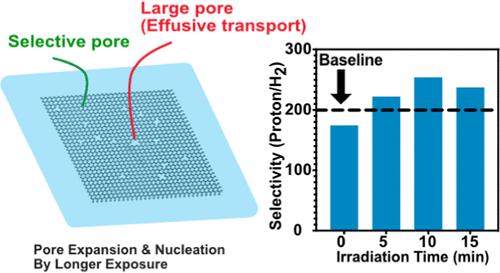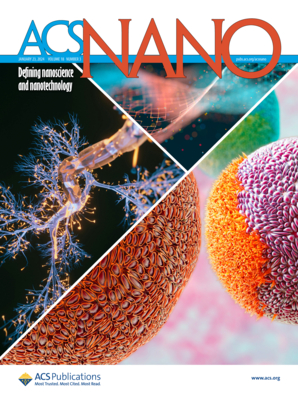Ozonated Monolayer Graphene for Extended Performance and Durability in Hydrogen Fuel Cell Electric Vehicles
IF 15.8
1区 材料科学
Q1 CHEMISTRY, MULTIDISCIPLINARY
引用次数: 0
Abstract
In the landscape of proton exchange membrane fuel cells (PEMFCs), there is a strong need for durable, low hydrogen crossover membranes that retain high current output and proton conductivity during operation. This study presents the use of UV-Ozone induced defects in graphene to eliminate the proton conductivity penalty commonly associated with traditional crossover mitigation strategies. We report a defect engineered graphene material that demonstrates an increase in hydrogen/proton selectivity of 27%, a decrease in H2 crossover of 24%, with limited to no impact on current output. Furthermore, we demonstrate a membrane that is 39% more durable than state of the art GORE Select membranes and shows no loss in performance after a 100 h accelerated stress test (AST). This study illustrates the viability of 2D material membranes to sieve between H2 and H3O+ in industrial testing conditions and serve as highly scalable and durable fuel cell membranes that represent a significant upgrade over current state of the art membranes for hydrogen fuel cell vehicles and clean energy generation.

求助全文
约1分钟内获得全文
求助全文
来源期刊

ACS Nano
工程技术-材料科学:综合
CiteScore
26.00
自引率
4.10%
发文量
1627
审稿时长
1.7 months
期刊介绍:
ACS Nano, published monthly, serves as an international forum for comprehensive articles on nanoscience and nanotechnology research at the intersections of chemistry, biology, materials science, physics, and engineering. The journal fosters communication among scientists in these communities, facilitating collaboration, new research opportunities, and advancements through discoveries. ACS Nano covers synthesis, assembly, characterization, theory, and simulation of nanostructures, nanobiotechnology, nanofabrication, methods and tools for nanoscience and nanotechnology, and self- and directed-assembly. Alongside original research articles, it offers thorough reviews, perspectives on cutting-edge research, and discussions envisioning the future of nanoscience and nanotechnology.
 求助内容:
求助内容: 应助结果提醒方式:
应助结果提醒方式:


